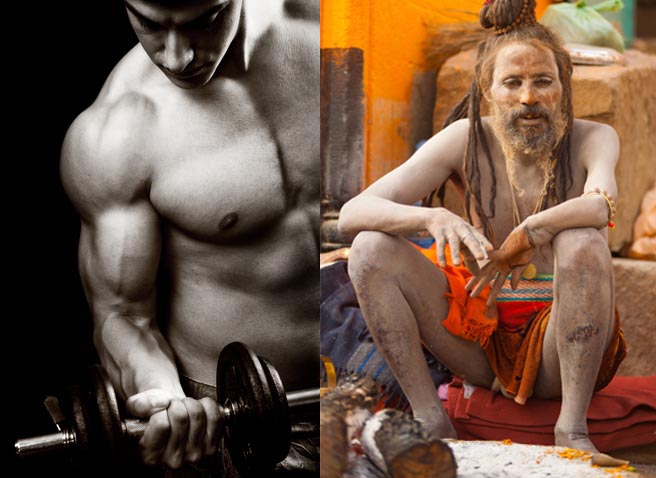
Matt and I have been engaging in some very lively conversations up here on the mountain. Those discussions have primarily revolved around two books. Thanks to the unrelenting snow storms there has been lots of time to read! I decided that a creative way to include you in the conversation would be to interview Matt. (1st posting in a series)
Q: You just read N.E. Sjoman’s book, The Yoga Traditon and tbe Mysore Palace, and Mark Singleton’s Yoga Body: the History of Modern Posture Practice. Why do you think these books are important to today’s practitioners of Yoga?
A: Each book is an attempt to trace the set of conditions that gave rise to Asana’s – – or the practice of posture – – becoming the central focus of “Yoga” in the West. It’s interesting that the traditional texts of Hatha Yoga (like the Hatha Yoga Pradipika) do not describe elaborate sequences of postures, linked together in very specific rhythms of movement and stillness; nor are there any standing postures to speak of in the Shiva Samhita. The original texts on Hatha are rather oriented strongly toward the practice of single postures for long periods of time, and are steeped in pranayama, bandha, and the akarmas or kriyas much more than today’s styles. So, why the modern equation of Asana as Yoga, and why these forms that we have?
Because we are practicing a hybridized art form, there is actually no definitive answer to these questions, but one thing is clear: most of us who have been practicing for a long time have been told various stories and legends about the origins of what we do, often in an attempt to ground our style of practice in the reaches of antiquity, and thus confer onto it a degree of mystique and authenticity. This orientation derives from the human tendency to value things because they are representative of an ancient lineage. Patthabi Jois for instance asserted that the sun salutation could be found in the Rig Veda, perhaps the oldest written text we know of. But there is simply no reason to see this as anything other than a creative act of interpretation on his part. The postural sequence we know as the sun salutation was in fact conceived by the Raja of Aundht, Pratinidhi Pant – – himself an avid body builder. Pant solidified this form and popularized it for the public. So it was a body builder who came up with the sequence for the purpose of advancing bodybuilding technology. Notably, according to Singleton, suryanamaskar and other techniques like it “. . . were not recognized as yoga” at the turn of the nineteenth century. (location 2472 kindle). Continue reading
